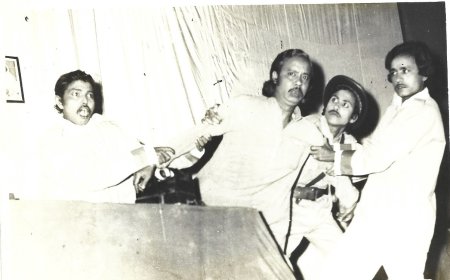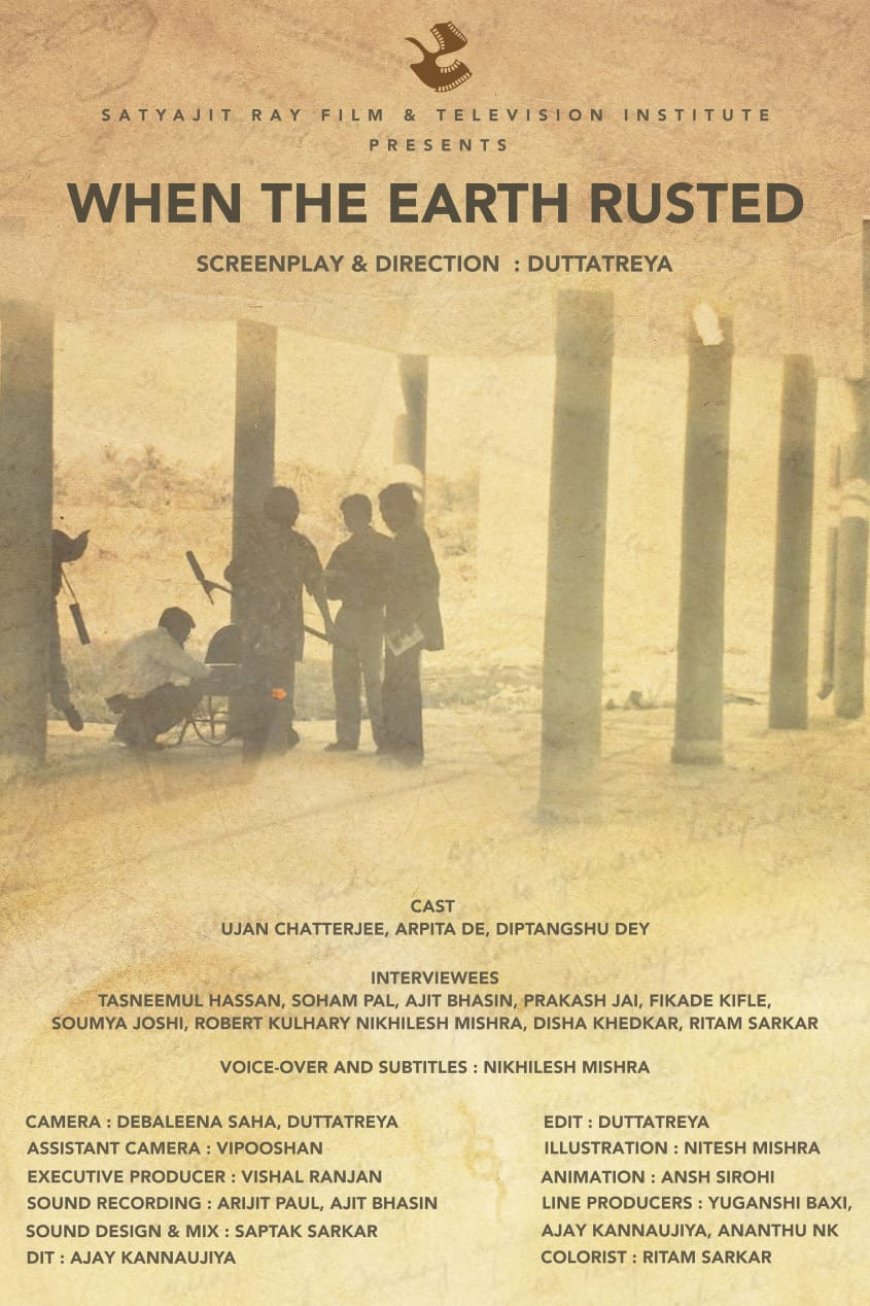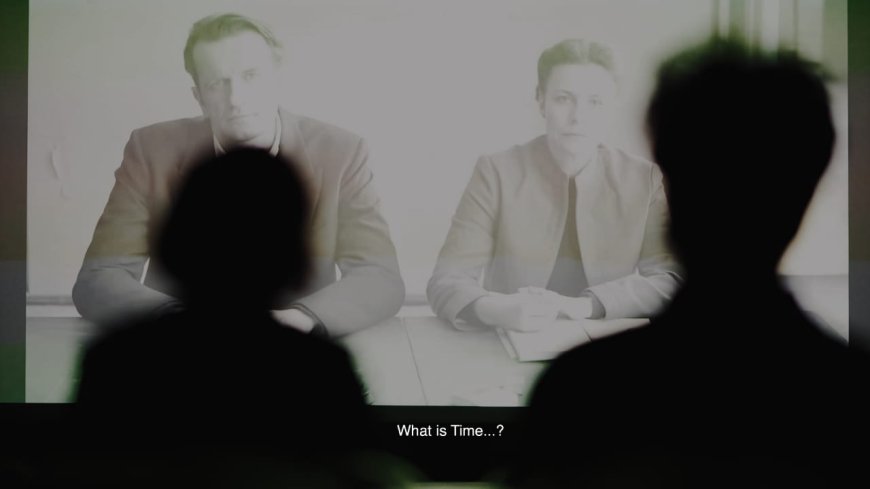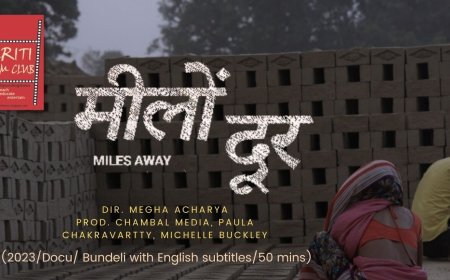When the Earth Rusted : A Short Film by Duttatreya Dey
Dr. Shoma A. Chatterji provides an interview with Duttatreya Dey on his short film titled "When the Earth Rusted".
Young people often go missing without a by-your-leave. Some of them can never be traced while some turn up dead. No one knows what made them leave or why did they turn up dead. No one knows how, when, where and why they died. But the ones they leave behind are devastated and this is not just the family. Duttatreya Dey has made a short film on one such incident. It is one of the mysteries of human existence that has never been solved. The film is called When the Earth Rusted.
Dey is a doctor by qualification. He upped and left his medical practice and joined the SRFTI in Kolkata. His film, When the Earth Rusted was screened at the 10th Kolkata People’s Film Festival held at Uttam Mancha in January this year. Shot mainly in muted colours or in Black-and-White, it is an emotionally moving film which explores the sudden missing of Anant, a bright boy who is never found. The film throws up more questions than offering answers.
Dattatreya opens up at an interview of his film and his entry from medicine to film-making as a career.
What exactly made you switch channels?
My desire to become a filmmaker crystallized when I had already started preparing for medical entrance exams. So I couldn't make the decision to switch then. During my medical college years, the passion for filmmaking became more intense. Some of us got together and made a few amateur films. It was then that I realised that I needed to learn the craft properly, and thus determined to study filmmaking in either FTII/SRFTI, which are the two premier filmmaking institutes in India. So, I completed the course and then gave the entrance exam and now I am a student in SRFTI with specialization in editing.
What does the title of the film When the Earth Rusted actually signify?
It refers to a time in earth’s pre-history when the first signs of life started to manifest in the earth's oceans. This led to a weird geological process which created a layer of rust all over the earth’s crust and almost all life became extinct. But that process actually led to the formation of oxygen in the atmosphere due to which newer more complex forms of life began to form which eventually led to humans. In my film, Ananta in his letter to Siddhartha, his close friend, writes about this as a dream. That rusting of the earth was actually a reboot of the Earth's body. Ananta also feels that his body is undergoing something of a reboot which ultimately led to him vanishing away into some unknown space. This is a poetic metaphor I have used to try to describe his feelings and sensations.
You have done a Vipasana course yourself. I have met many friends who came halfway through the course and never went back. Can you explain why?
Vipassana is a very intense form of meditation. You are not allowed to talk, read, listen to music, engage in sexual behaviour or have any other kind of sensory stimulus in those 10 days. If done properly it leads to a very radical churning of your memories, sensations and can question your egotistical existence very directly. A lot of people might get triggered by it and can't process it properly. Maybe that's why they can't complete the whole 10 days.
You have said that your aim was to discover the impact of Anant’s sudden disappearance on his close friends and not on why he disappeared and where he disappeared to. Right?
A similar incident happened in our institute last year where a student decided to leave the campus. I never knew the student properly but what intrigued me more was the way people reacted/did not react to it. That's why I mainly wanted to focus on the reactions and the way they were trying to process the disappearance.
We learn later that he took his own life but you stick to the "missing" factor. Is there a specific reason for the same?
The film is not a documentary. It is a docu-fiction. Then character of Ananta is a fictionalised version of the student who decided to vanish and ultimately decided to take his life. Some of the interviews are impromptu. Some are totally scripted. The character of Siddhartha, his childhood friend who he is writing letters to, is also a fictional character. The only point of similarity is that he came to Kolkata from a rural part of India and suffered a culture shock. Then decided to leave the campus and go to Vipassana. Death for me is a type of vanishing only. The fact that he died doesn't change any of the points made in film.
You said you preferred that the audience draw its own conclusions about what actually happened to Anant. Why?
I specifically wanted to focus what was going through his psyche and body when he decided to disappear. Here, Vipassana becomes very important. It is such an intense form of meditation that it makes your body extremely sensitive and volatile. It needs time to process it. That is why the letters to Siddhartha is the crux of the film. It is a direct reference to the Buddha who was the proponent of this meditation. This is directly related to the emptiness(non-self) philosophy in Buddhism which says that the concept of the Self is in itself an illusion and that things, people, experiences memories etc are essentially empty of any inherent meaning. Vipassana is one of the practices to reach that understanding which is the central step to achieving liberation/Nirvana. I would like to believe that Ananta has started his journey towards non-self which leads to liberation. That is my conclusion. A traditional conclusion of the story doesn't matter in that scenario.
I wish to understand your use of the baastushaap (the home-snake) that coils unto itself and does not disturb anyone within the family. It is considered wrong to kill it. What made you use it as a metaphor?
Snakes are very intriguing to me. The way they move, the way they coil on the ground, I feel that they are spiritually connected to the earth and its minute changes. They represent the circular nature of time for me. That is how I have used the metaphor in the film.
The locations are quite picturesque and the cinematography makes it more so. Where did you shoot the film?
The film was part of our course. At the end of our second semester, every student has to make a short film and it is mandatory to shoot all of it inside SRFTI. It took around six months from start to finish and it was shot completely within SRFTI.
You have not identified most of his acquaintances and friends by name and some have been shown partially in the dark. Why?
It was more a choice out of necessity to make the film look more dynamic. So, the darkness was dependent on the locations and the times of the shoot. As for the names of the characters, for me it was not important in the narrative. It was more important to discover how they reacted and tried to process the disappearance of Ananta. Even if they are not named, I think their personality comes out in the interviews.
How do you look back on the film today?
I have learnt a lot from this film specially from an editing and macro-structuring point of view. I have tried to blend seemingly opposing ways of story-telling (documentary and fiction) to create a narrative. My target was to achieve a coherent and engaging mood in the narrative while using different media like illustrations, animation, text, old photographs, voice-overs, talking head interviews as well as a few scenes of traditional, fictional storytelling. At some places, they have worked while in others they might not have. But it has certainly helped me to test my ability to mould the cinematic language to its limits while keeping the audience engaged in the narrative and not be completely esoteric.
What's Your Reaction?






































































